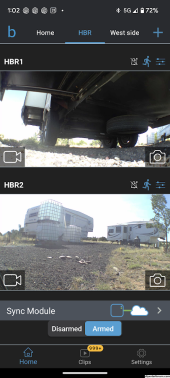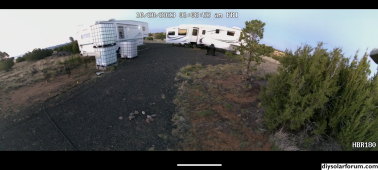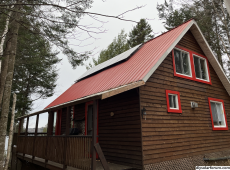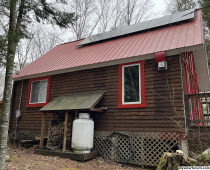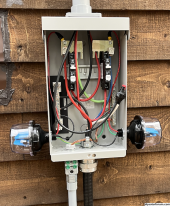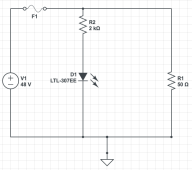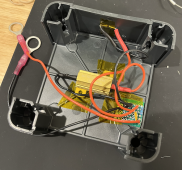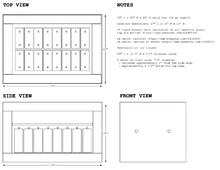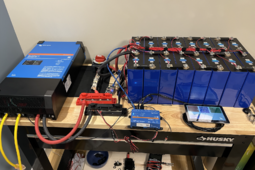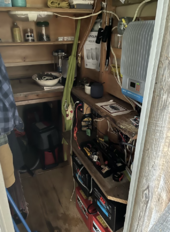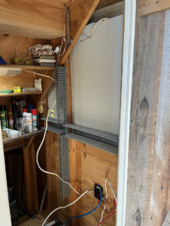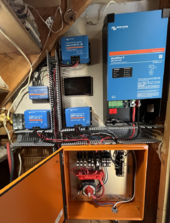offgrid-curious
New Member
I have recently acquired a small off-grid 3 season cottage/cabin. The cottage has a rudimentary solar set up that was installed by the previous owner that I’m looking to upgrade. The property has a few constraints (lots of trees, no direct south facing mount point) that are making the design of a new system challenging. I’m new to solar, and I’ve been poring over the material on this forum (thanks so much to all!) and everywhere else over the past few weeks to try to come up with an optimal solution.
We will be using the cottage maybe a few times a month for 2-3 days at a time from April-November. I’ve estimated that conservatively we’ll use approximately 4kWh/day when we’re there. When we’re not there, there are minimal power requirements - propane powers a fireplace, fridge, stove, lights. The current system is 12v, and the cottage uses 12v for the lake pump, some lights and water filter. Other than the fridge, everything else is off when away.
The property has a significant number of trees (that I don't want to cut down) that make the array placement challenging. Many people in the area have pole mounted set ups, but even with a 20’ pole, I believe there is too much shade/trees to justify the cost. The roof is not perfect - it faces roughly east/west, but I believe is the best mounting location I have available. My plan is to try to over panel to try to harvest as much power as I can, when I can.
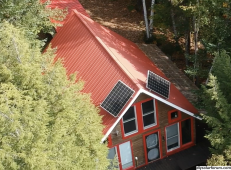
I’m currently planning on setting up separate 3S2P arrays on each side of the roof (12 panels total), with each side going to its own charge controller. The roof is at a 45 degree angle. I’m looking at Longi LR4-60HPB-350M panels, as I can get 3 of them in a string under 150v, and they seem to be relatively decent for low light performance. I’ve used PVWatts and tried to fudge its results to account for specific shading conditions at my location (e.g. in June, the east side of the roof should be clear for at least 4-5 hours in the morning, but shaded in the afternoon). My hope is that over a 3-5 days I’ll generate enough power to fully replenish the batteries.
Another constraint is that I have limited space to put the equipment. There is what is essentially a 4'x3' closet under the stairs that I intend to use for the batteries, inverter, charge controller, etc.
My plan is to build a 48v system. For the batteries, I’m thinking of using four 12v SFK v5 304AH, giving me a total of 14.6kWh of energy. These seem to have a good physical size/power ratio. While I don’t currently plan on using the system in the winter, the heaters (and insulated bags) are appealing if I do decide to in the future. And having four separate batteries allows me more flexibility in placement than a server rack battery would. The battery bank should cover at least 3 days of use.
I’m leaning towards Victron for the inverter, charge controllers, etc. They seem to have a very good reputation with regards to reliability and having separate components will allow me to customize the placement of individual components within the utility room. I also appreciate the lower inverter idle power consumption when compared to an AIO.
For the charge controllers, I am thinking of the Victron MPPT 150/45. I believe this SCC closely matches the max power of the array, and two of them are small enough to fit cleanly in the limited space I have.
For the inverter, I’m thinking of the Multiplus II 3k. I think it should accommodate my wife using her hair dryer, while also allowing kids to stream videos. I also have a small 2600w generator that can be used to charge the batteries (or for the Victron power assist function, if I decide to use some power tools while my wife is drying her hair).
Anyway, at a high level this is my plan. Is there anything that I’m missing, or that I have just plain wrong? Thanks!
We will be using the cottage maybe a few times a month for 2-3 days at a time from April-November. I’ve estimated that conservatively we’ll use approximately 4kWh/day when we’re there. When we’re not there, there are minimal power requirements - propane powers a fireplace, fridge, stove, lights. The current system is 12v, and the cottage uses 12v for the lake pump, some lights and water filter. Other than the fridge, everything else is off when away.
The property has a significant number of trees (that I don't want to cut down) that make the array placement challenging. Many people in the area have pole mounted set ups, but even with a 20’ pole, I believe there is too much shade/trees to justify the cost. The roof is not perfect - it faces roughly east/west, but I believe is the best mounting location I have available. My plan is to try to over panel to try to harvest as much power as I can, when I can.

I’m currently planning on setting up separate 3S2P arrays on each side of the roof (12 panels total), with each side going to its own charge controller. The roof is at a 45 degree angle. I’m looking at Longi LR4-60HPB-350M panels, as I can get 3 of them in a string under 150v, and they seem to be relatively decent for low light performance. I’ve used PVWatts and tried to fudge its results to account for specific shading conditions at my location (e.g. in June, the east side of the roof should be clear for at least 4-5 hours in the morning, but shaded in the afternoon). My hope is that over a 3-5 days I’ll generate enough power to fully replenish the batteries.
Another constraint is that I have limited space to put the equipment. There is what is essentially a 4'x3' closet under the stairs that I intend to use for the batteries, inverter, charge controller, etc.
My plan is to build a 48v system. For the batteries, I’m thinking of using four 12v SFK v5 304AH, giving me a total of 14.6kWh of energy. These seem to have a good physical size/power ratio. While I don’t currently plan on using the system in the winter, the heaters (and insulated bags) are appealing if I do decide to in the future. And having four separate batteries allows me more flexibility in placement than a server rack battery would. The battery bank should cover at least 3 days of use.
I’m leaning towards Victron for the inverter, charge controllers, etc. They seem to have a very good reputation with regards to reliability and having separate components will allow me to customize the placement of individual components within the utility room. I also appreciate the lower inverter idle power consumption when compared to an AIO.
For the charge controllers, I am thinking of the Victron MPPT 150/45. I believe this SCC closely matches the max power of the array, and two of them are small enough to fit cleanly in the limited space I have.
For the inverter, I’m thinking of the Multiplus II 3k. I think it should accommodate my wife using her hair dryer, while also allowing kids to stream videos. I also have a small 2600w generator that can be used to charge the batteries (or for the Victron power assist function, if I decide to use some power tools while my wife is drying her hair).
Anyway, at a high level this is my plan. Is there anything that I’m missing, or that I have just plain wrong? Thanks!



